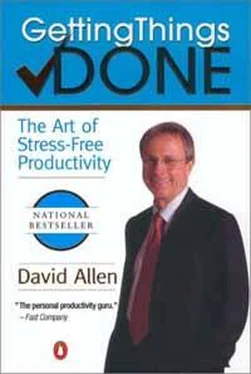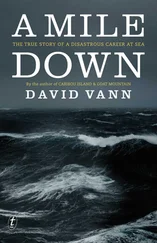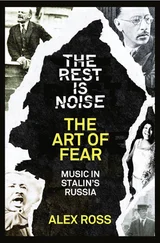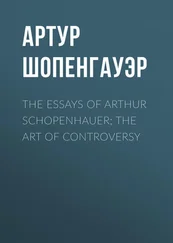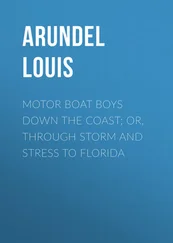The goal is to get projects and situations off your mind, but not to lose any potentially useful ideas.
This kind of thinking doesn't have to be elaborate. Most of the thinking you'll need to do is informal, what I call back-of-the-envelope planning—the kind of thing you do literally on the back of an envelope in a coffee shop with a colleague as you're hashing out the agenda and structure of a sales presentation. In my experience this tends to be the most productive kind of planning you can do in terms of your output relative to the energy you put into it. True, every once in a while you may need to develop a more formal structure or plan to clarify components, sequences, or priorities. And more detailed outlines will also be necessary to coordinate more complex situations—if teams need to collaborate about various project pieces, for example, or if business plans need to be drafted to convince an investor you know what you're doing. But as a general rule, you can be pretty creative with nothing more than an envelope and a pencil.
The greatest need I've seen in project thinking in the professional world is not for more formal models; usually the people who need those models already have them or can get them as part of an academic or professional curriculum. Instead, I've found the biggest gap to be the lack of a project-focusing model for "the rest of us." We need ways to validate and support our thinking, no matter how informal. Formal planning sessions and high-horsepower planning tools (such as project software) can certainly be useful, but too often the participants in a meeting will need to have another meeting—a back-of-the-envelope session—to actually get a piece of work fleshed out and under control. More formal and structured meetings also tend to skip over at least one critical issue, such as why the project is being done in the first place. Or they don't allow adequate time for brainstorming, the development of a bunch of ideas nobody's ever thought about that would make the project more interesting, more profitable, or just more fun. And finally, very few such meetings bring to bear sufficient rigor in determining action steps and accountabilities for the various aspects of a project plan.
The good news is, there is a productive way to think about projects, situations, and topics that creates maximum value with minimal expenditure of time and effort. It happens to be the way we naturally think and plan, though not necessarily the way we normally plan when we consciously try to get a project under control. In my experience, when people do more planning, more informally and naturally, they relieve a great deal of stress and obtain better results.
The Natural Planning Model
You're already familiar with the most brilliant and creative planner in the world: your brain. You yourself are actually a planning-machine. You're planning when you get dressed, eat lunch, go to the store, or simply talk. Although the process may seem somewhat random, a quite complex series of steps in fact has to occur before your brain can make anything happen physically. Your mind goes through five steps to accomplish virtually any task:
The most experienced planner in the world is your brain.
1 Defining purpose and principles
2 Outcome visioning
3 Brainstorming
4 Organizing
5 Identifying next actions
A Simple Example: Planning Dinner Out
The last time you went out to dinner, what initially caused you to think about doing it? It could have been any number of things — the desire to satisfy hunger, socialize with friends, celebrate a special occasion, sign a business deal, or develop a romance. As soon as any of these turned into a real inclination that you wanted to move on, you started planning. Your intention was your purpose, and it automatically triggered your internal planning process.Your principles created the boundaries of your plan. You probably didn't consciously think about your principles regarding going out to dinner, but you thought within them: standards of food and service, affordability, convenience, and comfort all may have played a part. In any case, your purpose and principles were the defining impetus and boundaries of your planning.
Once you decided to fulfill your purpose, what were your first substantive thoughts? Probably not "point II.A.3.b. in plan." Your first ideas were more likely things like "Italian food at Giovanni's," or "Sitting at a sidewalk table at the Bistro Cafe." You probably also imagined some positive picture of what you might experience or how the evening would turn out—maybe the people involved, the atmosphere, and/or the outcome. That was your outcome visioning. Whereas your purpose was the why of your going out to dinner, your vision was an image of the what —of the physical world's looking, sounding, and feeling the ways that best fulfilled your purpose.
Once you'd identified with your vision, what did your mind naturally begin doing? What did it start to think about? "What time should we go?" "Is it open tonight?" "Will it be crowded?" "What's the weather like?" "Should we change clothes?" "Is there gas in the car?" "How hungry are we?" That was brainstorming. Those questions were part of the naturally creative process that happens once you commit to some outcome that hasn't happened yet. Your brain noticed a gap between what you were looking toward and where you actually were at the time, and it began to resolve that "cognitive dissonance" by trying to fill in the blanks. This is the beginning of the "how" phase of natural planning. But it did the thinking in a somewhat random and ad hoc fashion. Lots of different aspects of going to dinner just occurred to you. You almost certainly didn't need to actually write all of them down on a piece of paper, but you did a version of that process in your mind [2] If, however, you were handling the celebration for your best friend's recent triumph, the complexity and detail that might accrue in your head should warrant at least the back of an envelope!
.
Once you had generated a sufficient number of ideas and details, you couldn't help but start to organize them. You may have thought or said, "First we need to find out if the restaurant is open", or "Let's call the Andersons and see if they'd like to go out with us." Once you've generated various thoughts relevant to the outcome, your mind will automatically begin to sort them by components (subprojects), priorities, and/or sequences of events. Components would be: "We need to handle logistics, people, and location." Priorities would be: "It's critical to find out if the client really would like to go to dinner." Sequences would be: "First we need to check whether the restaurant is open, then call the Andersons, then get dressed."
Finally (assuming that you're really committed to the project— in this case, going out to dinner), you focus on the next action that you need to take to make the first component actually happen. "Call Suzanne's to see if it's open, and make the reservation."
These five phases of project planning occur naturally for everything you accomplish during the day. It's how you create things—dinner, a relaxing evening, a new product, or a new company. You have an urge to make something happen; you image the outcome; you generate ideas that might be relevant; you sort those into a structure; and you define a physical activity that would begin to make it a reality. And you do all of that naturally, without giving it much thought.
Natural Planning Is Not Necessarily Normal
But is the process described above the way your committee is planning the church retreat? Is it how your IT team is approaching the new system installation? Is it how you're organizing the wedding or thinking through the potential merger?
Читать дальше
